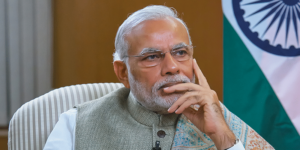It wasn’t until recently that Bharat or the India that lies beyond the urban centres came into the focus as far as businesses were concerned. One of the reasons behind this shift has to be attributed to India’s startup ecosystem which realised the vast opportunities that lay beyond the big cities. One such startup that has been doing its bit to bring Bharat into prominence is social video commerce platform . It has been working on creating a platform for budding content creators and influencers, with a special focus on non-urban India.
As of July 2021, the Trell platform has featured 500+ brands, with 70 percent of the purchases from Tier II and Tier III cities. On the platform users consume or create content across categories such as beauty and wellness, health and fitness, food, travel, across eight regional languages. These include Marathi, Hindi, Kannada, Tamil, Bengali, Telugu, Malayalam, and English.
Over 60 percent of Trell’s user base consists of women between the age group of 18 and 35 from Tier II cities and beyond who actively create over 70 percent of the content on the platform.
“People relate to content when they think it’s real. Shahrukh Khan is not using Lux, but an influencer is actually using it and sharing their experience in their own language. People believe in it and that’s the power influencers own,” Bimal Kartheek Rebba, Co-founder and COO (chief operating officer) at Trell tells YourStory Founder and CEO Shradha Sharma.
Launched in 2017, Trell is a Bengaluru-based lifestyle focused social commerce startup with more than 50 million monthly active users. It was founded by Arun Lodhi, Bimal, and Pulkit Agrawal. The platform works in a way where creators can talk about products in their videos, if the viewers wish to buy them, they can do so from Trell itself, directly off the video.
“It’s the most easy and engaging way to discover products and services and mostly the content is generated by the influencer community that we built over the years,” says Bimal.
Building on the D2C opportunity
According to the Direct-to-Consumer (D2C) Purchase Index, within the next five years, about 80 percent of consumers purchasing online will be buying from D2C brands at least once. As Bimal highlights, the total value that could be created in the D2C ecosystem by 2025 is likely to be as high as $200 billion. Not only are the number of D2C entrepreneurs increasing, but also the capital that’s going into this is compounding on a year on year basis.
But at the same time, new categories are coming up almost every other day, while some old ones go out of favour. The brands are at war on all fronts whether it is the price range, the product type or the product quality. While the first wave of distribution was led by large corporations and celebrity faces, now you just have to be online, get people’s attention and they will look at you. By that means this is an entirely new definition of distribution, as Bima points out.
“We believe that if you do not have a differentiated product, have very frequent conversations where influence of only influencer marketing will give you ROI (return on investment) because you cannot have Shahrukh Khan talking about your product every day, right?”
And here influencers, and users are going to play a very vital role. Their conversations will only multiply and if the brands are not part of this communication, then they’re likely fighting a losing battle.
“That’s how we’re looking at it. The growth of D2C brands is focused on their brand recall power and that’s where platforms like Trell would eventually come. Also, this awareness needs to happen consistently, and not just on a campaign basis. We aim to create real time stories for brands along with influencers, educating the end consumer, helping them understand the need for that particular brand, and putting it on top of consumer’s mind.”
Taking ecommerce deeper into Bharat
It would not be an exaggeration to say that ecommerce has been solved rather well for India. However, Trell aims to take ecommerce to markets that are still somewhat beyond access because of information disparity that still exists.
“Our mission statement is: How do we move to these markets that have disposable incomes and affinity to experiment and aspiration to buy good brands, but don’t have access to or an understanding,” says Bimal.
He believes video is an important medium here. “You have only 170 million shoppers even today, right? But you have 500 million people who are actually watching video online. So that means there is a lot of headroom to grow in this market.”
Bimal elaborates: “It needs investment into it. If you’re doing it, it takes six months, one year, but eventually people will find your products. For example, India produces 300 crore to 400 crore bottles every year of nail polish. There are local brands that actually do Rs 80 crore to Rs 100 crore revenues a year, and no one knows about it, because they do very well in those local markets. To use these local markets you have to have diversified communication.”
Ensuring credibility and trust for brands
In the D2C and influencer led buying space, factual accuracy and trust are key pillars. There are chances of the entire influencer marketing as a piece collapsing resulting in a domino effect if this problem is not addressed.
At Trell, before an influencer engages with any brand, they are made to undergo a grooming programme. First, the community team takes them through things such as product categories, talking to end users, and generally educating the users through content and more.
The second step is to ensure no lines are crossed which can impact the brand value.
“If they liked the product, they can call it out. If they do not like the product, they could also specify the reason why it didn’t actually work out for them. It’s important to highlight reasons it may work for some people so that the brand credibility is not impacted in any manner.”
And the third “most important thing” Trell does is encourage brands to accept feedback from influencers even if it’s negative.
“No product, or no brand is built in a day’s time. Nestle has taken 150 years to just perfect baby food. So now if you want to launch a baby food, you have to have certain iterations. So that’s where influencers as subject matter experts play a role.”
Show me the money, honey
Influencers today are creating their own music videos, video content, becoming anchors, participating in web series and more. But from the monetisation perspective, things are still tough for most.
“Less than 3 percent of these influencers today, are on more than Rs 40,000 per month and only a handful get the top dollars. And that’s where I think we as a platform are trying to understand how do we work with influencers so that they have enough potential to monetise [sic],” says Bimal.
He further explains – one option is where influencers become part of both branding revenues, as well as every sale, “that they’re actually able to get to a brand”. Trell helps out by giving them a platform and the tools to educate audiences about a brand and build perpetual income on the interface for one single content.
“This way, what we want to do is make them integral part of the entire commerce ecosystem just on branding. So that means as commerce keeps expanding in India, influences will also start earning every part of sale that is made through this. So this is one initiative that we’re taking, which we think will promote a lot of influencers to move beyond that Rs 40,000 a month bucket.”
The road ahead
India is currently brimming with the hopes and ambitions of a rising creators community. Now worth more than $100 billion and powered by over 50 million creators, this is a new class of ‘content-preneurs’ and Trell is standing at an exciting and busy junction here.
It has raised a total of $61.9 million in funding and is backed by investors such as Fosun RZ Capital, H&M CO:LAB, and Mirae Asset-Naver Growth Fund, among others. The Street expects the startup to reach the magical $1 billion valuation number soon and enter the hallowed unicorn (startups valued at or over $1 billion) club.
Trell highlights that it is not planning to build a horizontal ecosystem like Flipkart or Amazon, instead, it wants to be in categories “that could help add value, or help people discover, give them enough content so that they can make better decisions”.
“That’s where we are absolutely focused. Through video, influencers, and regional languages, we want to solve this problem. The market is too big for us. If we are able to solve this really well, we could stay sustainably well in this market within itself. So that’s where we want to focus,” concludes Bimal.
You can watch videos from all the sessions of Brands of New India Mega Summit here. Don’t forget to tag #BrandsOfNewIndia when you share your experience, learnings, and favourite moments from the event on social media.
For information on future events, collaborations, and information regarding the D2C ecosystem, please visit our website.




![Read more about the article [Funding alert] Credgenics raises $25M in Series A round at over $100M valuation](https://blog.digitalsevaa.com/wp-content/uploads/2021/08/Imagedej8-1628577393111-300x150.jpg)





![Read more about the article [Weekly funding roundup April 18-22] Venture capital inflow remains in stable territory](https://blog.digitalsevaa.com/wp-content/uploads/2022/04/weekly-funding-roundup-1640354161359-300x150.png)